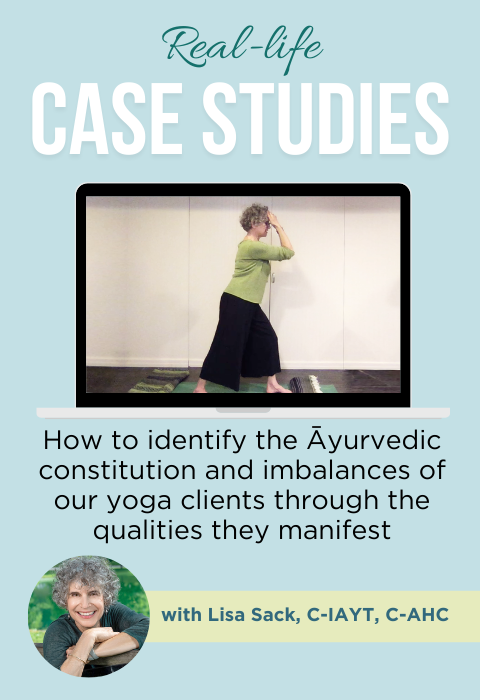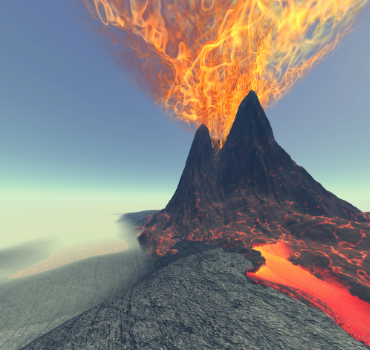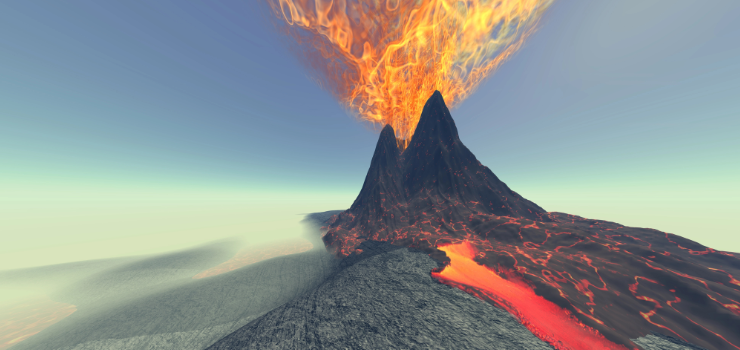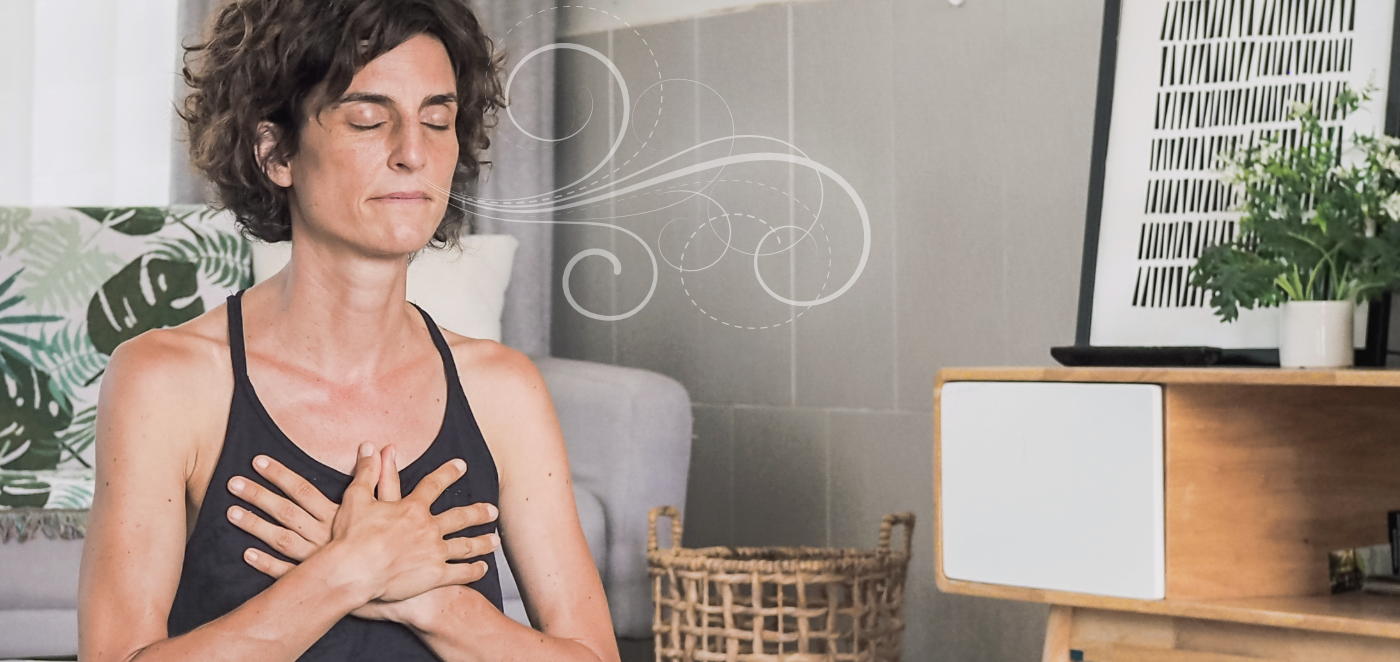How do you catch a cloud and contain it? Recognizing vāta in and out of balance

Āyurveda offers a systematic approach to assessment; careful observation and questioning can go a long way, even without reading pulse, towards helping us, as yoga therapists, begin to recognize a client’s unique constitution (doṣa) and imbalances. But what exactly is a doṣa? As with many Sanskrit terms, there’s no single word in English that provides an adequate translation. Think of the doṣas as physiologic/energetic/psychological organizing principles that reflect our elemental makeup. According to Āyurveda, everything in the cosmos is made up of the same 5 elements: space, air, fire, water, and earth. The doṣas are combinations of those elements: vāta is space and air; pitta, fire and water; and kapha, earth and water. Everyone has all 3 doṣas in varying combinations: often one or two are more dominant, but all 3 are always present, and our unique constitution reflects not just the ratio of the doṣas, but which of their qualities (guṇas) are most prevalent.
Wait, qualities? What does that mean? Here’s an example: Imagine yourself hiking on a mountain trail that takes you through dense wooded forests, the sky hidden under a canopy of green. Up and up and up you go, the trees growing sparse around you, the air thin, until you emerge into a landscape of rough stones, and scrabbly bush. You shiver as the wind whips around you–sometimes forceful, sometimes more of a caress. Your skin feels drier. The sky is clear, a faint robin’s egg blue at the horizon and deepening to cerulean above you. A hawk’s cry pierces your ear, and your heart opens joyfully to the vastness of the universe.
Note the descriptors: cold, dry, clear, light (as in insubstantial), rough, subtle, and especially mobile/irregular. These are the qualities of vāta resulting from the combination of space and air. Vāta doṣa regulates all movement in our gross and subtle bodies, from the ease with which food travels through our digestive tract, to our breathing, to the thoughts that race in our minds. So what do these qualities look like in an actual client and how would you know if they were out of balance?¹
Let’s start with physical traits: someone who is predominantly vāta from birth is often slender, with not much fat or muscle tone (light quality). They’ll tell you that weight gain is rarely a problem–if anything they have a hard time keeping weight on since sometimes they forget to eat, or they graze, or feel full quickly, because their appetite and digestion is often variable and erratic. Vāta types can be very tall or very short, and they often have prominent joints and are small-boned. Since irregularity is one of vāta’s hallmarks, you might notice it in your client’s features, or in limbs that aren’t quite proportional. They may have a hard time sitting still (that’s mobile quality manifesting) their fingers drum, feet tap, and eyes dart about. They like to dance, do vinyasa flow, and travel. Irregular, mobile quality will also show up in the way a vāta-predominant client answers your intake questions: these clients often talk fast, barely seem to breathe, and start by telling you one thing, get distracted, and then flit off in another direction. Once untethered, it can be hard to reel them back! When their vāta is in balance, you’ll note their creativity, mental flexibility (vāta-predominant types tend not to be rigid in their approach to life; many artists have a good deal of vāta in them), enthusiasm, and alertness–all signs of appropriate subtle quality. But they can also have a hard time completing projects, particularly if mobile quality is high. Vāta types find it challenging to stick with one thing.
If mobile, light, subtle, and clear qualities are aggravated over a long period of time, enthusiasm can turn to excessive restlessness, impulsivity, fear, anxiety, fatigue, and feeling ungrounded. And that can cause insomnia, particularly if a client wakes around 3AM (vāta time of night) and can’t get back to sleep. According to the Charaka Samhitā, one of Āyurveda’s foundational texts, there are 80 known disorders resulting from vāta aggravation. Pain that travels around the body is one. When vāta settles into tissues and organs it often creates depletion (way too much clear and light qualities)–e.g., emaciation, dehydration, osteoporosis.
This gives you some idea of how mobile, light, subtle, and clear qualities of vāta manifest. Cold, dry and rough are especially apparent in a client’s sensitivities and physiology. They may tell you their hands and feet are always cold and that their skin tends to be dry. The cold of winter will further aggravate vāta, to the point that your client’s lips might be chapped and cracking. So look carefully at your client’s skin, hair, and nails for signs of excessive dryness that’s turned rough, e.g. split ends, cracked nails, fissures around their nail beds. Dryness can also show up in a client’s joints–if they have a lot of cracking and popping, vāta is out of balance. And dryness in a client’s digestive tract will manifest as hard, cracked, and pellet-like bowel movements as well as constipation.
Now think about your clients. Does anyone come to mind with a number of these qualities? And then consider this: Are they over 55 (meaning in the vāta time of life)? Do they live in a cold climate? Do they shun routines? Do they eat lots of dry and cold foods? All these factors will also aggravate vāta. Notice how much you can learn about your clients through careful observation and questioning.
In my next two blog posts, I’ll share the qualities of pitta and kapha in balance and when aggravated. And then, we’ll look at how these observations might influence your recommendations as a yoga therapist.
¹When the doṣas are out of balance, we’re usually talking about accumulation–too much of certain qualities building up. This is based on Āyurveds’s approach to disease pathogenesis–the doṣas accumulate in the digestive tract and then overflow into the rest of the body, lodging in weak spots and causing aggravation and, eventually, disease. Keep in mind, though, that doṣic imbalance can also be a result of outside influences, too, for example, trauma, exposure to environmental factors, natural disasters, and so on.
Check out Lisa’s Real-Life Case Studies video series, available exclusively to Sequence Wiz members. Learn more about Case Studies at Sequence Wiz >)

Introduction: Three pillars of an Āyurvedic assessment and how to use them
Part 1. Techniques for increasing awareness of the pelvic floor for a student exhibiting vata imbalance
Part 2. Techniques for dealing with stress, neck tension, and loss of stability in life
Part 3. Assessing life habits in preparation for conception
Part 4. The power of lifestyle changes for creating stability and dosha balance
About Lisa
Lisa Sack, C-IAYT, E-RYT-500, C-AHC, is a certified Viniyoga® therapist, Āyurvedic Health Counselor, and Hanna Somatic Educator®. She practices yoga and yoga therapy in the tradition of TKV Desikachar, as taught to her by Gary Kraftsow, founder of the American Viniyoga Institute™. Lisa trained as an Āyurvedic Health Counselor in the lineage of Dr. Vasant Lad through New Moon Āyurveda and Joyful Belly School of Āyurveda. She offers Āyurvedic consultations, yoga therapy, and somatic education both in person and online. Visit her at Clear Sight Yoga & Ayurveda.











Love this series Lisa and Olga!
Thank you, Mary!